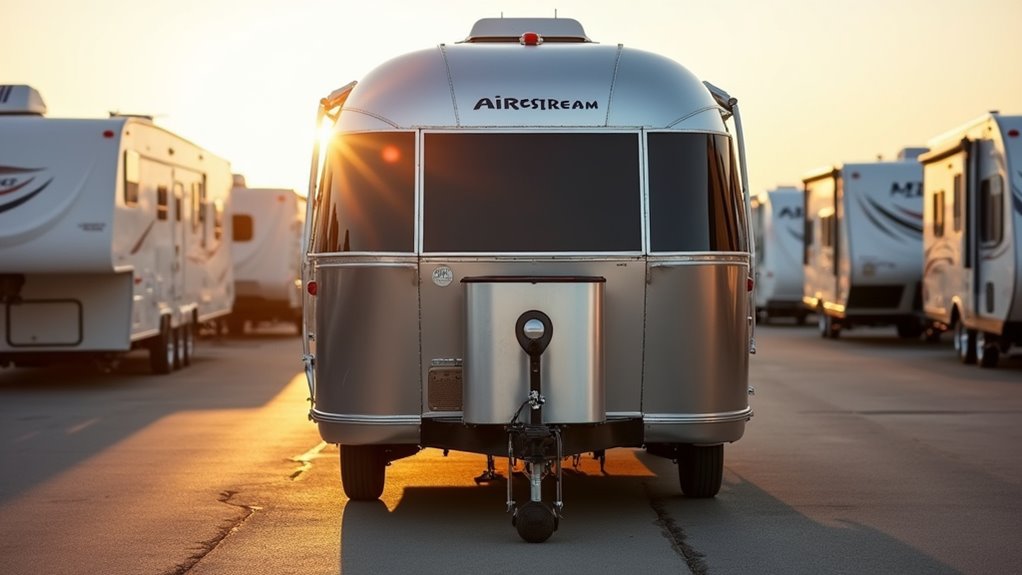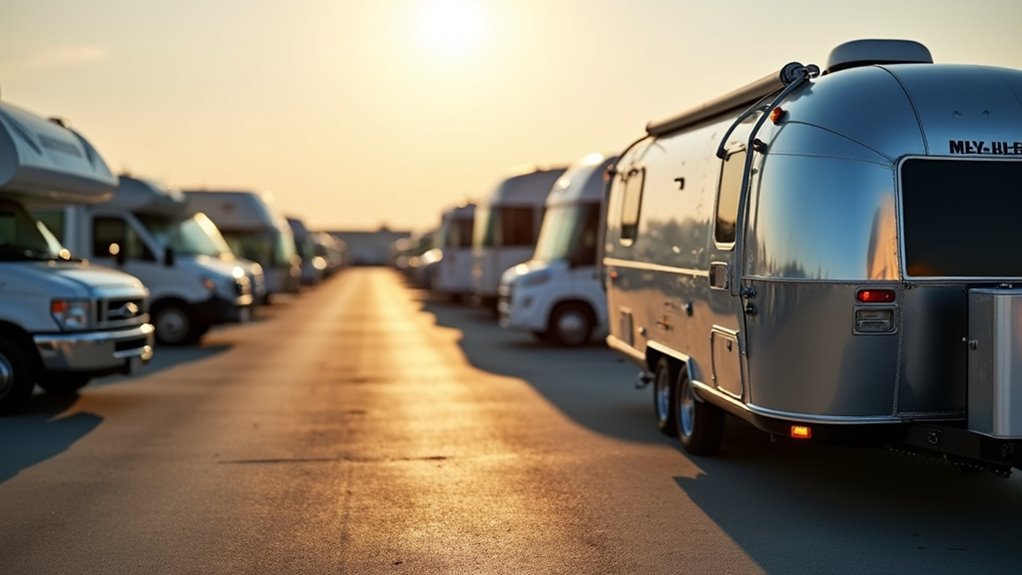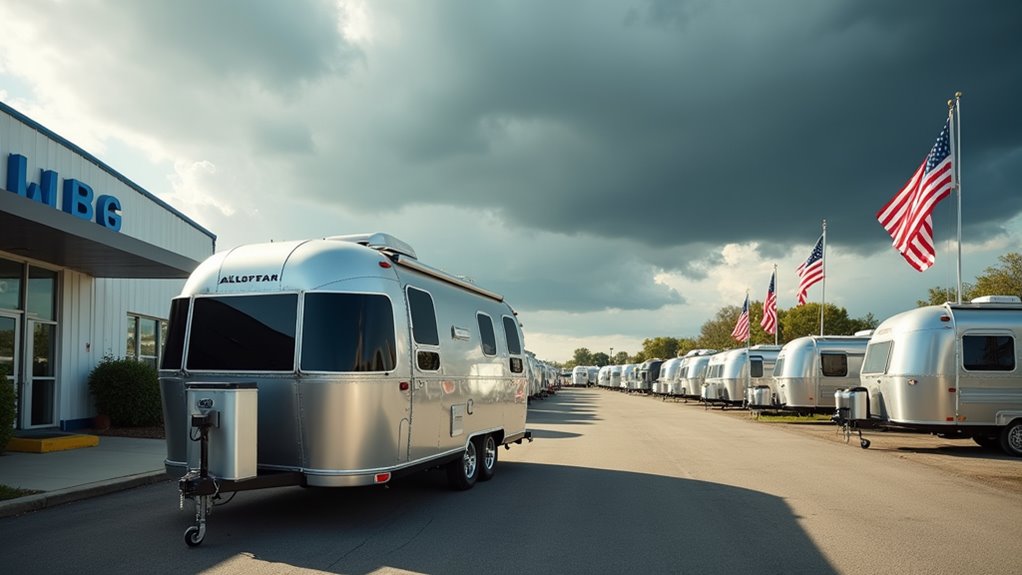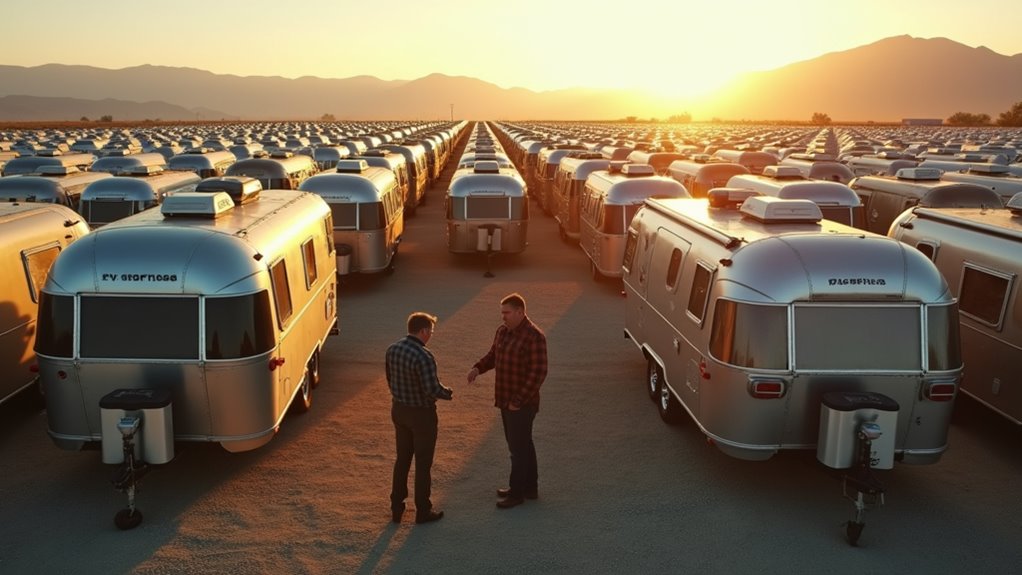Physical Address
304 North Cardinal St.
Dorchester Center, MA 02124
Physical Address
304 North Cardinal St.
Dorchester Center, MA 02124

Learn the insider secrets that separate profitable RV flippers from those who lose money in today's unpredictable used camper market.
You’re stepping into a used RV market that’s dramatically different from just a few years ago. Inventory levels have shifted, pricing patterns have changed, and what worked for buyers and sellers in 2019 won’t necessarily work today. Whether you’re looking to upgrade your current rig or flip RVs for profit, you’ll need fresh strategies that account for today’s realities. The old playbook simply doesn’t apply anymore, and that creates both challenges and unexpected opportunities.

While the RV market has faced significant headwinds with an 11.98% year-over-year decline in February 2025, this downturn creates a prime opportunity for savvy buyers looking to enter the used RV market. This decline is part of broader market fluctuations that can benefit informed purchasers. You’ll find used RV values have dropped considerably, making now the perfect time to buy before demand inevitably pushes prices higher again. The market’s showing clear patterns you can exploit. New RV sales fell 6.9% while inventory tightened, but used units remain plentiful at reduced prices. You’ll notice 2024 model clearances are ongoing as dealers make room for 2025 inventory. Consumer confidence changes are driving this shift, creating excellent buying conditions. Interestingly, more RVs were actually sold than manufactured in 2024, with 356,518 units purchased while only 333,733 were built, indicating that dealer inventory is actively shrinking. Don’t wait too long—market uncertainty won’t last forever, and smart buyers are already capitalizing on these favorable conditions.

Since you’re entering a buyer’s market, understanding inventory levels and pricing patterns becomes essential for securing the best deal on your used RV.
Winter months bring increased inventory as demand drops, creating opportunities for better pricing. You’ll find motorhomes averaging around 2016 model years selling for approximately $60,607, while towable RVs from around 2020 average $17,083.
Pricing trends show motorhomes declining 2.9% monthly but appreciating 15.1% annually. Towables dropped 6.6% month-over-mouth with steady year-over-year performance.
Focus on entry-level or luxury segments—mid-range models face weaker demand and declining prices. The mid-range market has been particularly challenging, with price ranges between $30,000-$60,000 experiencing significant declines throughout 2024. Time your purchase during winter inventory buildups when dealers adjust prices downward to compete with new arrivals and stimulate slow-season sales.

Three key factors determine whether you’ll maximize your RV’s trade-in value: preparation, timing, and negotiation strategy. Start by deep-cleaning your RV and fixing minor issues like loose latches or burnt-out bulbs. Document all maintenance records and gather manuals to prove your RV’s condition. Research your RV’s market value before visiting dealers, who typically base offers on low retail prices. Get multiple trade-in quotes to strengthen your negotiating position. Don’t expect significant returns on upgrades—they rarely boost trade-in value substantially. Timing your trade during off-peak seasons when dealers need inventory can make a difference, especially when combined with market demand trends. Remember that dealers factor in preparation costs for cleaning and repairs, which typically average $2,000 to $5,000 per RV. Negotiate the entire transaction as a package deal rather than focusing solely on trade-in value. Dealers consider overall profit margins, so flexibility on financing or accessories can improve your trade-in offer.

As interest rates climb toward double digits, securing affordable RV financing requires more strategy than simply walking into the first lender you find.
Start by prequalifying with multiple lenders, especially credit unions that often offer the best rates around 7.75% APR for qualified borrowers.
Don’t automatically choose the longest loan term—while 180-month loans lower monthly payments, they’ll cost you considerably more in total interest. Loan terms are now available up to 240 months, giving buyers even more flexibility in structuring their payments.
Shop aggressively for rate discounts. Some lenders offer 3% APR reductions for refinancing or cash bonuses on loans over $10,000.
Consider alternative financing like home equity lines if you’ve got solid home equity.
Most importantly, improve your credit score before applying—the difference between good and excellent credit can save you thousands over your loan’s life.

Why struggle to find good RV deals when increased inventory has created the best buyer’s market in years? Used RV prices are normalizing after pandemic highs, giving you serious negotiating power. Essential tips for RV buyers include being patient and thorough in your search.
With inventory rising and dealers keen to move units, you’re positioned to score quality deals. Focus on lower-cost models that’re surging in popularity – they offer the best value opportunities. Travel trailers are seeing increased demand, suggesting solid resale potential. However, the used RV market experienced a 12.14% decline in sales year-over-year in December 2024.
Don’t overlook older models with good maintenance records; they’re more affordable and can deliver excellent value. Prioritizing reputable brands can also help ensure your investment lasts.
Here’s what to prioritize:

Before you list your RV, understand that timing and preparation directly impact your selling success in today’s competitive market. Start with thorough market research to price competitively while leaving negotiation room. You’ll want to analyze regional demand and competitor pricing to maximize your profit margins. Focus on presentation—ensure your RV’s well-maintained with detailed maintenance records. High-quality photos showcase condition better than descriptions alone. Consider minor cosmetic upgrades that enhance appeal without breaking your budget. Adding off-grid capabilities like solar power systems or lithium batteries can significantly boost your RV’s desirability and resale value among modern buyers. Recognizing current market trends can help you identify the best times to sell and set realistic expectations. Market strategically using popular RV listing platforms and social media promotion. Engage with local RV communities and respond promptly to inquiries. Don’t forget compliance requirements like emissions laws and extensive sales contracts. With used RVs showing strong profit margins in today’s market, proper preparation pays off greatly.

When market conditions shift rapidly, your negotiating power with RV dealers changes dramatically—and understanding these fluctuations gives you the upper hand before you step onto any lot.
Start by monitoring inventory levels and recent sales data to gauge whether you’re entering a buyer’s or seller’s market. Research values using NADA and Kelley Blue Book, then set your maximum budget before negotiations begin. Consider getting preapproval for financing to demonstrate your seriousness as a buyer and clarify your exact budget parameters.
Knowledge is power in RV negotiations—research market conditions and set firm budget limits before dealers ever see you coming.
Remember, RVs typically carry 40% markups, so there’s room to work.
Key strategies for fluctuating markets:
Watch for bundled fees and “boss approval” stalling tactics that dealers commonly use.

Since RV markets vary dramatically by region, you’ll find better deals and faster sales by understanding where demand is surging versus where it’s collapsing.
Olympia-Centralia, WA leads with 141% growth, followed by Anderson, IN at 110%, and Longview-Marshall, TX at 91%. These hot markets mean higher selling prices but tougher buying conditions.
Conversely, Worthington, IN and Hastings, NE crashed 82% and 81% respectively, creating buyer opportunities but challenging selling conditions.
Longview, WA dropped 71%, while Grand Falls, MT and Tallahassee, FL declined around 64%.
You can capitalize on these disparities by buying in declining markets and selling in growing ones. The national momentum from 37,348 units shipped in March 2025 suggests continued market activity across different regions.
Research your target region’s specific trends before making moves, as national averages don’t reflect local realities.
Think of the used RV market like fishing – you’ll catch more when you know the water conditions. Last year’s buyer who waited until fall inventory peaked saved 15% off spring prices by timing it right. You’ve got the tools now: market timing, pricing research, and negotiation tactics. Don’t just cast your line randomly into the RV lot. Study the currents, use proper bait, and you’ll land that perfect camper deal.